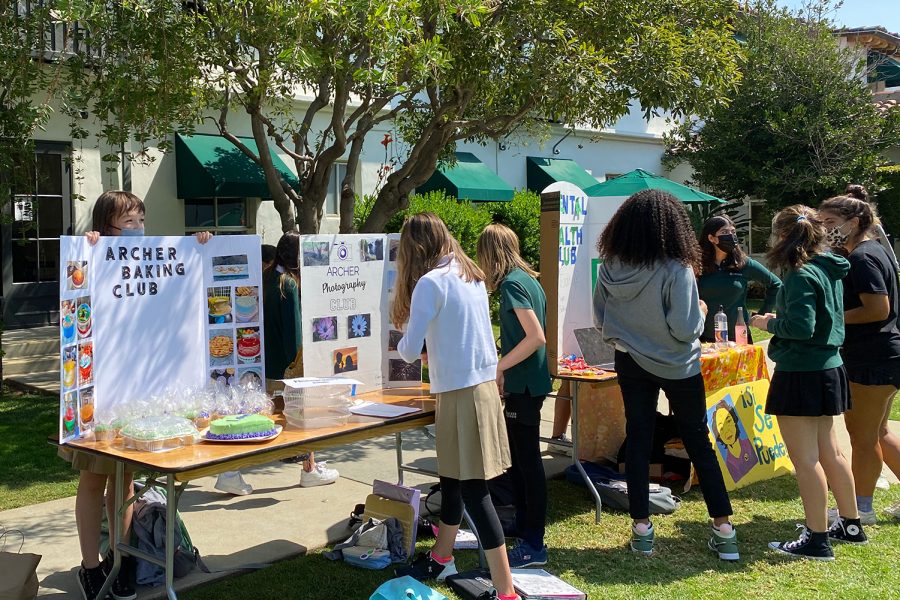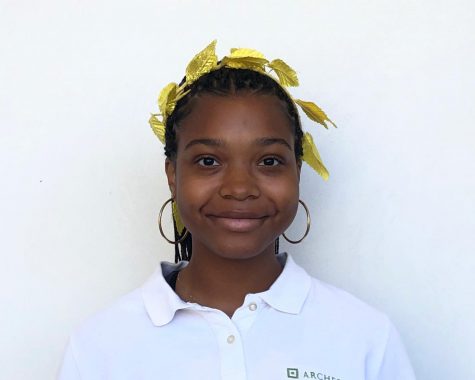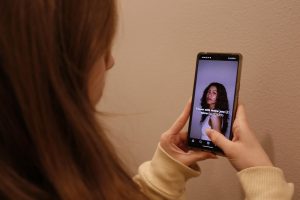Club spotlights: New and old clubs in full effect since Club Fair
Photo credit: Sabrina Kim
Students stand behind booths promoting their club at Archer’s annual club fair. The club fair was held on Sept. 24 and clubs have been meeting regularly since then. New and old clubs are experiencing in-person meetings for the first time since the return to campus.
October 26, 2021
From buddies to bills, sustainability to social justice, the Archer campus is home to a variety of different clubs, each with its own unique mission and goals. There are over 45 clubs on Archer’s campus, six of them are affinity clubs, which are groups organized based on shared identity.
Best Buddies
Junior Alyssa Ponrartana is the leader of the Archer chapter of Best Buddies, a non-profit organization dedicated to providing opportunities for people with intellectual disabilities. Archer’s chapter of Best Buddies has been active since 2006. The club is open to all grade levels and meets on the third Thursday of every month in room 262. The club’s last meeting was on Oct. 22.
“At its core, Best Buddies’ mission is to create one-to-one friendships between people with intellectual disabilities and people without those,” Ponrartana said.
Best Buddies works to provide people with intellectual disabilities job opportunities, such as working in the retail industry and customer service. The club also focuses on inclusive living, which gives people with intellectual disabilities the opportunity to be independent financially, as well as to live on their own.
Archer’s chapter of Best Buddies is paired with Kayne Eras, a non-public school in Culver City for students with intellectual disabilities. In previous years, the buddies would come to Archer by bus, and the club members would do a variety of activities and games with the buddies such as JustDance, Pictionary and Charades. Due to COVID-19, the buddies will not come directly to Archer this year. In the future, Ponrartana plans to set up a pen-pal program between club members and buddies, which will simulate the one-to-one feeling while being COVID safe.
The main organization of Best Buddies coordinates specific events, such as the annual Friendship Walk which takes place every spring. The LA Best Buddies participants and volunteers walk for inclusion and friendship to raise money for the organization.
Ponrartana’s goals for Best Buddies this year include speaking at two school meetings each semester, holding a workshop informing the community about intellectual disabilities and having a successful Friendship Walk fundraiser.
Ponrartana emphasized the importance of the club at Archer and said she believes Best Buddies initiates conversations about intellectual disabilities and inclusion.
“Best Buddies will bring knowledge of intellectual and developmental disabilities and will help create a more inclusive, accepting environment at Archer,” Ponrartana said.
Archer’s Council for Sustainability
Archer’s Council for Sustainability (ACS) has been active for eight years and strives to improve Archer’s sustainability and reduce its global footprint. ACS meets every Wednesday in the backfield. The club’s last meeting was on Oct. 20.
According to board member Georgia Ehrlich (’23), the club’s current goals consist of improving the compost and recycling system at Archer. ACS hopes to collaborate with the servery in the future to decrease the amount of plastic usage.
“[ACS] is really excited to potentially work with the servery and include our garden curriculum,” Ehrlich said. “We want to minimize plastic usage in the servery and do some sort of farmers market or fresh lunch with the produce we grow.”
Ehrlich highlights the importance of a club focused on sustainability in a generation where climate change is a “hot topic.”
“Sustainability and climate change are super big social issues at the moment that affect all of us. It’s something we’re all facing as people growing up in this generation,” Ehrlich said. “Archer is a place that houses a lot of different students that use energy and water [and] produce food and supplies, so it’s important that we take steps to minimize the amount of damage we’re doing to the environment.”
Building Bridges
Senior co-presidents Lexi Tooley and Layla Huber-Verjan lead Building Bridges, a club centered around activism and advocacy. Building Bridges is a club open only to upper schoolers, and the club meets on the first Friday of every month.
Building Bridges works in conjunction with The California Conference for Equality and Justice (CCEJ), a human relations organization focused on eliminating bias, bigotry and racism through education and advocacy. The CCEJ’s Building Bridges for Youth program has several school-based clubs. Archer’s chapter of Building Bridges works to highlight social justice and activism on campus.
According to Tooley, Building Bridges hopes to bring “great opportunities” from CCEJ to Archer.
“CCEJ has a lot of resources, really intelligent speakers and activities that we would like to bring to Archer for the entire community to participate in,” Tooley said.
Tooley highlighted the importance of having a club centered around social justice and activism in the Archer community.
“We need more outlets to talk about social justice, and I know that we do have things such as BSU or even history class, but I feel like having this club dedicated to the mission for equality and justice—focused on youth building bridges in new communities and cultures—I think that it’s a great space that the community needs.”
Billionaire Girls Club
Juniors Zoe Griffin and Samantha Garibaldi are co-presidents of the newly founded Billionaire Girls Club, which focuses on financial literacy. The club is open to all grade levels and meets every other Wednesday in the amphitheater. The club’s last meeting was on Oct. 6.
According to Griffin, Billionaire Girls Clubs’ goal is to make students more comfortable talking about money.
“When [girls] out in the world and going to job interviews, they don’t feel like they have to automatically accept the amount. They can ask for more and really figure out what works best for their lifestyle.”
At future meetings, the club will focus on the stock market, investing and different forms of interest. Griffin said it is important for money management to be taught at home and school.
“My co-president said something along the lines of ‘Money isn’t taught in school, it’s taught in the home,’ and we’re trying to make sure it’s taught in school so girls have equal opportunities,” Griffin said. “We don’t want it to be just the rich getting richer and the poor getting poorer. We want everyone to really understand the importance of money, and how to have it work best for you.”









